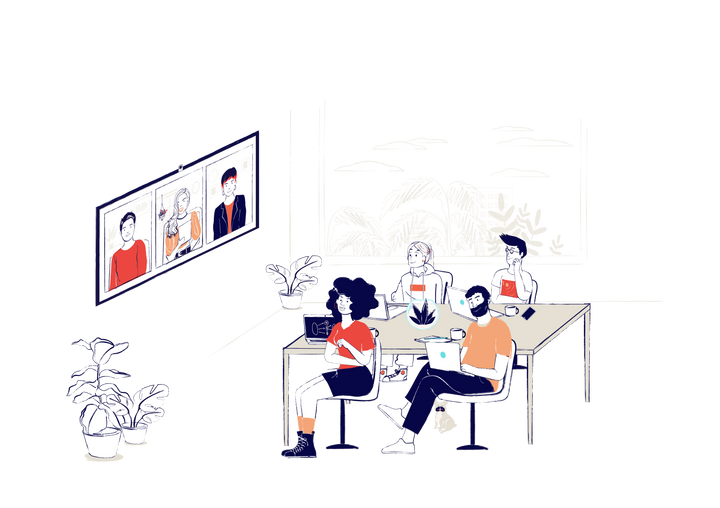How We Can Be More Digitally Inclusive to Narrow the Digital Divide

By Rebecca A Mendoza
In late 2015, I was job hunting when I came across a Digital Inclusion Officer job at a well-known social change charity in the UK. I had spent the previous few years working in digital marketing and desperately needed a change. I read through the job description, did some research and applied.
I had a lot of advantages growing up in a nice suburban neighborhood on California’s central coast, not far from Silicon Valley. I had two parents, both with stable government jobs with good benefits. We got our first computer at home when I was about seven years old and my siblings and I learned how to use it by playing games like The Oregon Trail, Mario Teaches Typing, and Where in the World Is Carmen San Diego?
As a Millennial, my adolescent years coincided with a new wave of technological advances that brought us cell phones, Playstations and Myspace. The crunchy, screechy noises of dial-up internet was a familiar sound in our living room, eventually replaced by the silence of broadband connections. I got my first laptop the week I started college and I’ve had one ever since.
It was only after I started my new job as Digital Inclusion Officer that I realized how important it was that I had access to all those things. For there to be inclusion means that there is likely exclusion—and I had very clearly never been digitally excluded.
This is the digital divide.
According to the International Telecommunication Union (ITU), approximately 3.7 billion people (just under half the world’s population) do not use the internet. Studies and surveys across the world make it clear that the reasons for this aren’t because people don’t want to engage, but rather they don’t have the right access. Some communities—particularly those that are already disadvantaged in society—are more likely to lack access to digital tools and technology, and may not have the skills to use those tools and technology effectively.
For years, government agencies, civil society organizations, and millions of individuals have been working on digital inclusion: figuring out how to enable individuals and communities to participate in digital aspects of modern society and benefit from them.
Over the past 30 years in the US, we can see rapid growth in internet use, broadband adoption and smartphone ownership. But the fact remains that the digital divide is still present and affecting millions of people’s health, education, life expectancy as well as their social and financial prospects.
What makes an individual or community digitally included?
Over the years, there has been a lot of emphasis put on improving broadband infrastructure in the US. In November 2021, US Congress passed the Infrastructure Expansion Act of 2021, a one trillion dollar infrastructure bill of which $65 billion will go to expanding high-speed internet access. This is, of course, an essential element to closing the digital divide, but there’s more to it.
According to the National Digital Inclusion Alliance (NDIA) there are five necessary elements to achieve digital inclusion:
- Affordable, robust broadband internet service: Broadband internet service needs to be available and affordable to everyone, regardless of geographic location and income.
- Internet-enabled devices that meet the needs of the user: The devices we use (smartphones, tablets, laptops, etc.) need to have internet access and be capable of carrying out the necessary functions related to our personal, professional and accessibility needs.
- Digital literacy skills: Everyone needs digital skills to do what they require in their personal and professional lives.
- Access to quality technical support and training: As technology evolves, so should our skills. Everyone needs access to quality support and training that fits their style of learning.
- Accessible services and content: Applications, services, processes and online content needs to enable and encourage self-sufficiency, participation and collaboration.
There will always be a group of people that, despite having all the essential elements, will still choose not to engage with the online world. But for millions of people, a lack of any one of the five elements can create significant barriers for an individual or community, leading to more exclusion in their lives.
Providing these five elements for the whole of the US, and for the whole world, is complicated. However, survey data can help us decide where to focus our efforts.
Who is likely to be digitally excluded?
The Covid-19 pandemic has made the digital divide all the more visible as daily life was shifted to online platforms. It’s not surprising that the people having the hardest time adapting to online education, working, etc. are the same people who are already disadvantaged in society—whether it be by income, geographic location, age or disability.
One of the biggest barriers to digital inclusion is the cost of access. Surveys conducted by Pew Research Center in early 2021 confirm that lower wage earning households are less likely to be able to afford robust broadband services. In the survey, 57% of US adults in households earning $30,000 or saying they have a broadband connection at home, compared to 92% of adults that live in households earning $75,000 or more.
Location also has a direct impact with people living in rural areas experiencing more barriers when it comes to broadband access with 72% of people in rural households having broadband connection at home, compared to 77% in urban households and 79% in suburban households. Though those numbers don’t seem extraordinarily different, for some rural communities, like the Duck Valley Indian Reservation on the Idaho/Nevada border, access is much more of a struggle than other areas.
People with disabilities are also more digitally excluded than those without disabilities. Surveys show that Americans with disabilities are less likely to own digital devices and are three times as likely to say they never go online. While a lack of accessibility features may have also kept new technology out of reach, assistive technology like facial recognition, voice assistants, and screen readers are evolving to allow more people with disabilities to use devices.
There are also disparities linked to age as well as race and ethnicity.
However, just like everything else, it can be complicated. Digital exclusion is usually caused by a combination of barriers. A person on a lower income can also be older and have disabilities. A middle-aged technically savvy person may have all the necessary devices and digital skills but live in an area where quality broadband internet is just not available. A person with a disability may have the money to buy accessible devices and broadband, but might not have the quality technical support to help them use it.
How can we help fix the digital divide?
As technology advances, so must digital inclusion on every level. The fact remains that the most digitally included have created a world where billions are excluded worldwide.
Policy makers and governments have a huge role to play, but there is a lot that can be done on a more localized level. As employers and service providers, public and private sector organizations can play an important role to narrow the digital divide. Here are a few things to think about:
Conduct user research to understand the barriers of your stakeholders.
Solutions can’t be created or implemented without first knowing the problems. Gather information by having open and honest conversations with employees, end-users, etc. about their digital access and skills. We know that circumstances are complicated when it comes to digital inclusion. Good user research can identify those barriers and give you insight into how to improve a process, product or service to make it more accessible.
Provide options for training and support.
Technology is constantly evolving and so should our skills. Confidence and skills are built over time and having access to ongoing training and support is crucial. What training options are available for employees when they join your organization? What options do they have if they need further support? Is there money available for extra learning and development related to digital technology? What is your organization doing to support your service or end users that may be struggling?
Provide people with the right devices.
User research will almost certainly show that one device does not fit all. Our devices should reflect our accessibility needs, our task requirements and where we do our jobs (at a desk, while traveling, in an office or public spaces). Though it’s technically easier to have only a small range of devices, this may prohibit people from feeling confident in their work. It could also mean that people are unable to do their job well. What device options are available to people? Is device allocation determined by the user’s accessibility, task and work style needs?
Review digital processes, content and functionality to improve services and products.
A good digital process or product is more than digitizing something that used to be done on paper. It’s about using available technologies to make it as accessible, user-friendly and useful as possible. You can also conduct user research on your processes, content and products which can help highlight barriers and pain points for different audiences. Does your organization regularly review processes, content and functionality of products and services? Does the review process involve good user research and human-centered design?
Support digital inclusion programs and legislation.
Many libraries and grassroots organizations have been left to piece together support for those that are most digitally excluded. The most successful programs are rooted in communities, but they often lack planning, funding and implementation support. Research what programs, initiatives and legislation are in, or affecting, your community and commit to supporting them in some way—be it through funding, raising awareness or volunteering time and expertise.
Final thoughts on narrowing the digital divide
There are individuals, communities and organizations around the world working hard to narrow the digital divide, but we all can do something to help. My years working as Digital Inclusion Officer taught me that collectively, there is a lot we can do to reduce institutional and structural barriers to accessing and using technology. Even the small things like helping a relative learn how to use new features on their smartphone can create a lasting positive impact on their life.
Though the issues with digital inclusion are vast and progress is slow, I remain optimistic that we can, and will, narrow the divide.
Rebecca is a freelance writer based in the North of England. She is American by birth, Mexican by heritage and (most recently) British by naturalization. You can find out more about her and her work at rebeccaamendoza.com




